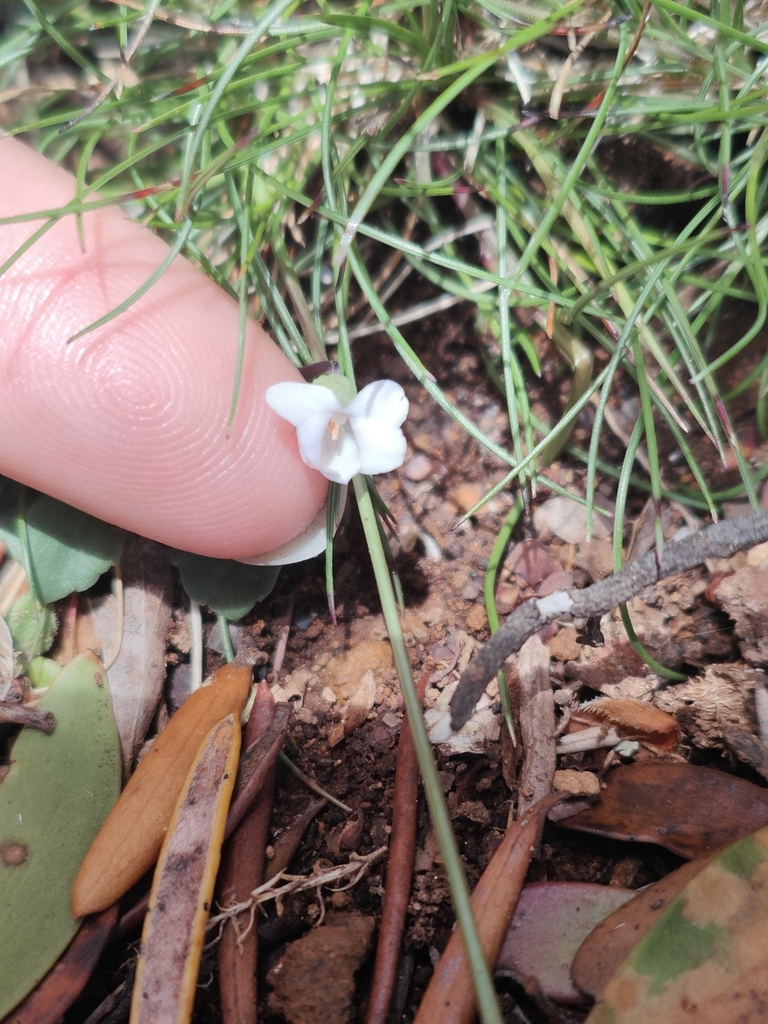iNaturalist January News Highlights
We hope everyone had a great start to 2024. Here are our January highlights! Our hidden theme for this week are files 🪰. If you missed last month's highlights, you can catch up here.
Species Discoveries

New species described
Listen to @johnmanning share the story of describing a new species of South African iris from a posting by @alexanderr.
🪰 This article describes a new species of Alaskan snakeworm described by @dssikes, @pereiratpl and colleagues and the role their iNaturalist project played in the discovery.
Lost species rediscovered
Re:Wild has been using iNaturalist as part of their effort to relocate lost species. This interesting article describes a recent publication summarizing their progress. So far, 27% of species on the list published in the study are represented by observations in their iNaturalist project.
Range Extensions and Distributions

Range Extensions
- This article describes @jggbrown, @kevinthiele and @mftasp’s discovery of the first known population of a rare violet from Tasmania.
- This study by @collinst, @dougvg, @frankiecoburn, and @acschneider documented the first disjunct Arizona population of a plant found in New Mexico.
- This study by @makario, @angel-romero, and colleagues used an observation by @antshrike69 to document the first known occurrence of a South American snake in Central America.
Improving Distributions
iNaturalist is increasingly used as the basis for studies to increase our basic understanding of species biogeography and diversity. For example, @k_jiaranaisakul and colleagues used iNaturalist records to fill out distribution maps for 14 species of lanternflies from Thailand. This month we highlight biogeography studies using iNaturalist data on:
Invasive Species Science

A study published this month by @flo_grattarola and colleagues used 15 years of iNaturalist records to track the spread of invasive sea fig across Uruguay.
- There was another article on an invasive crayfish population in Canada and the role @drcrayfish played in identifying it.
- 🪰 @rodrigo_barahona_13 and colleagues studied the spread of a Woodlouse parasitizing fly in Chile with the help of an iNaturalist project
There were many other invasive species studies leveraging iNaturalist this month including studies on:
- The spread of Chinese Tallow and invasive moths in Florida
- An invasive beetle in South Africa
- Invasive plants in Russia in two studies here and here
- An invasive plant in Ukraine
- An invasive plant in Arkansas
Conservation and Monitoring

We were able to make our own case for how iNaturalist spurs conservation in a Revelator article this month.
As the southern hemisphere summer continues, we saw more stories this month from the New Zealand Government and about South African National Parks on using iNaturalist to help scale their limited monitoring capacity for conservation. The stories are connected with two of iNaturalist’s most prolific community members with the former profiling @jon_sullivan and the latter co authored by @tonyrebelo.
Protected Area management
- This study by @eric_tigrerito and colleagues assessed use of iNaturalist for protected area monitoring and management in Mexico.
- Similarly, this study by @lcmarinho1 and colleagues explored the use of iNaturalist for monitoring in a Brazilian State Park.
- This story about a The Nature Conservancy preserve in Michigan highlights the role iNaturalist plays in communicating the value of preserves to the public through showcasing the biodiversity that has been observed within them.
Restoration and Stewardship
- This article by @wncbotany describes a vision for regenerating landscapes for biodiversity and the role that iNaturalist plays.
Climate Change Science

iNaturalist is helping us understand how a warmer world is impacting biodiversity. This story describes winter bioblitzes that @ihz2 and colleagues are conducting to understand the effects of warmer winters in the finger lakes region.
This story features @jtanney0's work to understand the spread of sooty-bark disease to drought stricken trees in a warming Victoria through their project.
Warm water events off the Pacific Coast led to the spread seastar wasting disease. This story describes how @rbank and colleagues are using iNaturalist to monitor the spread of and recovery from this disease.
Many species undergo seasonal migrations that are complicated by climate change. This story describes the listing of Monarch butterflies in Canada as endangered and accompanying efforts to ramp up monitoring using iNaturalist by @carolyncallaghan and colleagues at the Canadian Wildlife Federation. This study used iNaturalist data to better understand the timing of Monarch migrations in California.
On the topic of climate change and species migrations, we enjoyed this article by @frances_figart about unexpected vagrants showing up in Great Smoky Mountains National Park.
Species interaction Science

iNaturalist images are valuable not just for documenting a single organism in space and time but also for documenting interactions between organisms and all sorts of other "secondary data" as described in this study. This month there were three great stories that used iNaturalist to better understand interactions between birds and food plants.
- The first was a study that used iNaturalist images to reveal a more diverse diet for the endangered Red-bellied Macaw than was previously known.
- The second story was a about the mysterious paralysis of lorikeets in Australia and the iNaturalist project that @david4262 and colleagues are using to determine which food plant may be poisoning the birds.
- Lastly, @emilymstone wrote a great article about her travels in Hawaii and the interaction between the endemic Nene goose and the endemic blueberry relatives they feed on.
iNaturalist Impact on iEcology and AI Research

This revolution that allows scientists to access species interactions and other secondary data contained in nature photographs like those described in the previous section is driven by the availability of large volumes of nature photography and new AI tools to efficiently pull out patterns from these images for analysis.
We’ve been calling this the Phenotypic Revolution, but from this study we learned a new term for it: iEcology (internet ecology). In the study, researchers used iNaturalist images to characterize the global shift in hermit crabs from using shells to using plastic trash as homes and the impacts on behavior and evolution.
Meanwhile,
- iNaturalist continues to be used as a standard benchmarking dataset for evaluating new AI and machine learning techniques such as those described in papers by Xiao and colleagues and by Kim and colleagues. These studies benefit iNaturalist by developing new concepts that we can integrate into our infrastructure as these experiments by @alexshepard show.
- Lastly, long time iNaturalist collaborator @gvanhorn and colleagues describe new research to combine Computer Vision and Large Language Models in this study.
iNaturalist data and model quality
Improving data quality is a very important piece of iNaturalist's strategy for increasing our impact. Accuracy as a key feature alongside ease-of-use evaluated in many reviews of identification apps such as three that came out this month here, here, and here. Likewise data accuracy is very important for iNaturalist’s use by the scientific community as explained in this study by @edulg. We are now complementing our monthly model updates with monthly data accuracy assessments allowing us to quickly learn and iterate on accuracy improvements.
iNaturalist’s Human Health and Social Science Impact

Participating in iNaturalist doesn’t just help species; it also helps humans. Here are three ways:
- Getting outside and connecting with nature even in winter is good for you as eloquently described by @marieviljoen in this article describing her winter iNaturalist finds. Likewise, this article has tips on how iNaturalist can help get your kids outdoors this winter.
- An increasing number of people are finding foraging as a gateway for connecting them to nature. This article provides some tips for how iNaturalist can help and this study uses an iNaturalist project to understand urban foraging.
- While some things in nature are healthy, others are unhealthy. This toxicology study uses iNaturalist to better understand stinging caterpillars in the United States. Likewise, this article mentions iNaturalist in the context of threats from venomous snakes in Australia.
🪰 This article explains how some flies, like the Australian blowfly, are harmful to agriculture while others, like the Australian hoverfly, are beneficial against a beautiful backdrop of fly photography from @acerad.
On the social science front, there was more work this month from @guiming and colleagues on understanding community patterns within the iNaturalist social network.
iNaturalist Events
As covered here, this month marked the 10 year anniversary of the Vermont Atlas of Life, one of the longest running projects on iNaturalist. Congratulations to @kpmcfarland and the entire Vermont Center for Ecostudies team!
January events included bioblitzes in the southern California mountains described here and a project by @johnslowry and colleagues to document biodiversity on Prince Edward Island covered here and here.
iNaturalist’s Education Impact
This profile on @cpavlisich describes using iNaturalist in STEM teaching activities at the Wolf Ridge Environmental Learning Center. Other uses of iNaturalist in education settings include:
- This story on documenting mushrooms on an Indonesian university campus.
- And this study on using iNaturalist for student activities related to the Mounds of Central Polissia in Ukraine.
iNatters in the News

During a stop on her adventures sailing around the world making iNaturalist observations, @mandapanda made such an impression snorkeling off Greece in December that she was covered by the local news. If you don’t speak Greek, we definitely recommend having your browser translate the article and give it a read. Other iNatters in the news this month included:
- This great video of @alan_rockefeller discussing mushroom photography and his excellent hat choice.
- 🪰 @sherylsr from Texas Parks and Wildlife wrote this excellent story on the wonder of flies!
- In Southern California, @ibhappy’s kestrel observation was featured as iNaturalist Spotting of the Month while this story highlight’s @gregwatson passion for desert reptiles.
Thank you to everyone who participated in iNaturalist this January and we look forward to a busy 2024 - your support makes it all possible!





댓글
These are indeed such highlights -- thanks for dedicating the time to write these up. I thoroughly enjoy reading them and checking out all of the links!
Thanks @loarie! Although he wasn't mentioned by name in the news article, @kevinthiele should to be credited in the discovery of the first known Tasmanian population of an endangered violet, he was involved from the start and the first to identify it.
@mftasp - added thanks!
The "plant in Ukraine" link is broken
@cofa, fixed - thanks!
Love these highlights, thanks for writing them up.
In the paragraph on "Phenotypic Revolution", the link to "this study" is broken. Thanks!
@trscavo & @optilete - both fixed, thanks!
Thank you so much for these awesome posts and for the shout out to the Vermont Atlas of Life (https://val.vtecostudies.org/) Scott! Hurrah for iNaturalist!
Thank you so much for sharing my Texas fly article! Here's a direct link to the story: https://tpwmagazine.com/archive/2023/jul/ed_2_flies/index.phtml
@sherylsr Great article! Love the Mydas flies.
I really appreciate seeing how the iNaturalist data are being used around the world. As an amateur naturalist, I like the occasional reminder that the observations I'm posting and the identifications I'm making (alongside a phalanx of other users) are more than just pretty pictures and a hobby. Please keep sharing these updates!
Thanks for the mention in iNatters in the News! Education matters. Greg Watson
Typo: "paralysis or lorikeets" --> "paralysis of lorikeets," I assume
@hmheinz fixed thanks!
@loarie thanks for posting a link to the article re iEcology. The authors claim to have reviewed 28,994 iNat observations (281 species) of hermit crabs. Wow!
These monthly round-ups are so inspiring. They make me want to immediately grab my camera and head outside (which, to be honest, is not saying that much). And the links provide me with so much fascinating reading material -- thanks for putting them together, and thanks to everyone mentioned in all of the links for doing such good work!
I hadn't seen these monthly round-ups before. They are absolutely awesome!
Thanks for the mention too @loarie - much appreciated :)
There are not a great many things in life that are such fun and also so useful and important. Honoured to be part of all this.
Thanks so much for the mention @loarie , I really appreciate it and would also like to point out that my partner Simon was also in the article who is also an iNatter @bombdisposalboy and gave me the support I needed to Snorkel and record species at Argostoli :D
Great to see all the news in one article! Thanks for the work Loarie!
@loarie This is a great collection of stories and information! I regret to inform you that there is a typo in the "Species Interaction Science" section, where iNaturalist was spelled 'iNautralist'.
@loarie the 'This study' hyperlink to the Arizona plant study actually goes to the violet observation
@fluffyinca & @thebeachcomber both fixed thanks
the link only takes me to a generic google scholar search for iNaturalist now :(
whoops thanks
i love these monthly highlights and the amazing projects leveraging iNaturalist data.
댓글 추가